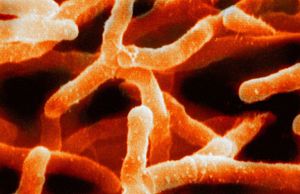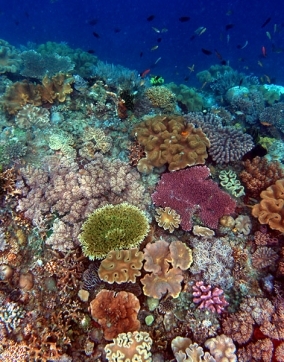Organism
An organism is any biological individual capable of self-sustained independent living including the functions of maintenance of its internal environment (homeostasis) and reproduction. Thus the concept may apply to any animal or plant species as well as fungus, bacterium or other carbon based life-forms on Earth. An organism may be unicellular or multicellular, the latter sometimes having the capability of many organs and highly specialized functions. Notably absent from the typical definition of organism are viruses, which can replicate, but are entirely dependent on host lifeforms for their survival. Contrarily non-viral parasites may have independent life stages where the organism maintains homeostasis totally outside of a host.
Tree of life
Organisms may be divided into the prokaryotes and eukaryotes based upon cell type. The prokaryotes represent two separate domains: Bacteria and Archaea. Eukaryotic organisms, with a membrane-bounded cell nucleus, also contain organelles, namely mitochondria and (in vegetation) plastids, deemed to be derived from endosymbiotic bacteria[1].Fungi, plant and animal species are eukaryotes.
Taxonomy is the traditional method of classifying groups of organisms; this aspect of biological studies has traditionally been driven by the Linnean scheme, that is chiefly based upon morphology of species. Phylogenetics is the study of the relationships among different groups of organisms, which is discovered through molecular sequencing data as well as morphological data matrices. Taxonomy has been complemented in the last few decades with the insights of molecular biology and gene sequencing elucidated through phylogenetics.[2]
However, caution should be applied to interpretations that there is any one "true" cladistic tree of life, since there is evidence that there are significant departures among organism classes from a Universal Genetic Code.[3]
Cellular basis
The concensus definition of organisms includes those that have a cellular structure; this excludes viruses, which have no cellular structure and cannot reproduce without a host cell. The cellular basis for organisms declares that organisms must possess each of the following abilities:
- Reproduction via cell division using DNA replication with messenger RNA support
- Response to stimuli (e.g. abiotic factors such as pressure, salinity, pH)
- Maintenance of homeostasis (constant internal environment)
- Metabolic functioning in an environment interior to a cell membrane (includes the abiltiy to extract energy from organic moledules and ability to extrude waste products)
Energy and nutrients
The raw materials needed for cell division, growth and homeostasis include some type of energy source and some chemicals needed for metabolism. In the case of most plants and a few animals (notably the xanthellae which produce coral reefs), photosynthesis is invoked to manufacture sugars from carbon dioxide, basic nutrients (e.g. nitrates and phosphates) and sunlight; such organisms are classified as autotrophs, or species that can manufacture their own food.
Heterotrophs include most animals as well as carnivorous plants; these organisms achieve most of their energy and nutrient requirements by devouring other organisms, which are the source of amino acids and other complex organic molecules. Heterotrophs include both herbivores and carnivore species.
Ecology
Organisms are usually discussed in the context of their natural environment, where one can assess the interactions of other species and the entirety of abiotic factors. Chief biological interactions are primary production for autotrophs, herbivory for plant consumers, predation for carnivores and parasitic or symbiotic relationships. Other interactions with the complex of environmental factors include nesting, resting and shelter opportunites from topographic, soils or biotic substrates. Nutrient availability is also important for plant growth. Water availability is important for all plants and animals as well as many microbes.
References
- T.Cavalier-Smith. 1987. The origin of eukaryote and archaebacterial cells, Annals of the New York Academy of Sciences 503, 17–54
- A.W.F. Edwards and L.L. Cavalli-Sforza. 1964. Systematics Assoc. Publ. No. 6: Phenetic and Phylogenetic Classification. ed. Reconstruction of evolutionary trees. pp.67–76.
- Andrzej Elzanowski and Jim Ostell. 2010. The Genetic Codes. National Center for Biotechnology Information. Bethesda, MD




